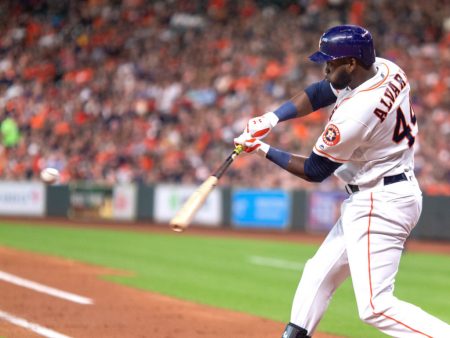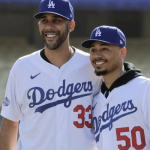Get Younger and Cheaper, Or Die
 Every one of the 30 major league GMs understands their charge is to get younger and cheaper, or die a slow death. Which leads to the question why would any team have traded for an aging, overpriced player like Robinson Cano?
Every one of the 30 major league GMs understands their charge is to get younger and cheaper, or die a slow death. Which leads to the question why would any team have traded for an aging, overpriced player like Robinson Cano?
Cano was still owed half of his bloated ten-year, $240 million contract, going into his age-36 season? Even combined with Edwin Diaz, as the deal was structured, the question still was, why pull the trigger?
Cano’s 2019 production can be summed up by his dreadful WAR of 0.4 and his wRC+ of 95 (that’s below league average).
Those are the kind of wretched numbers that encourage teams to release players from their contracts. But Cano will not be released as long as his employer owes him $24 million a year for the next four seasons (beyond 2019), which comes to $96 million.
Cano’s numbers, compared to the Mets’ recently acquired second baseman, Joe Panik’s 2019 numbers, are almost the same. Panik’s 2019 WAR is -0.4, and his wRC+ for the season is 74. Even more below-average than Cano’s.
That is why the San Francisco Giants released Panik from his $3.8 million contract in August, despite drafting him in the first round of the 2011 amateur baseball draft.
Presumably, an effective GM (even one as foolish as Brodie Van Wagenen of the Mets) would take a hard, realistic look at all his assets and assess whether his team could win the following season. And if not, consider what he should do to increase his team’s competitiveness. Decide if he should do it this season? Or, if not, what is a reasonable timeframe? That decided, when should he do it? Or should he accept a period of mediocrity, add more young talent, and look forward a year or two before beginning to add dollars and experience to forge a winning roster? Questions, lots of questions.
The real question about the Robinson Cano playing in his age-36 season (not the Cano who played for the Yankees a decade ago) was whether he was still a formidable player who could help a team win?
The silence of the 29 other GMs when Seattle shopped Cano was a loud shriek: Not anymore!
Van Wagenen did not hear these screams. He traded for Cano (and Diaz). A bold move, some have since said. What else could they say? They’re glad they weren’t the GM who made that move? In the end, it’s better to say nothing publicly than criticize. Everyone knows what comes around goes around.
Those who thought about making such a move should be glad they can look back and heed the lesson of Van Wagenen’s blunder when they decide to acquire a player. Finding winning talent is the biggest problem GMs face. Anyone can find a player who hits 20 home runs, hits .230, and strikes out 150 times. They’re all over baseball. It’s the problem that differentiates an effective GM from one who should be fired (like Van Wagenen).
So, the question still is, why do some teams find the next great player for pennies on the dollar and other teams pay through the nose for talent that fails to live up to expectations?
Mike Tauchmans of the World
When I read the Yankees traded for Mike Tauchman in March 2019, I yawned. Admittedly, they already had several outfielders injured and needed a body. But who was this guy? Why him?
I looked at his uninspiring Colorado numbers. But, the Yankees saw something. By September, when Tauchman injured his calf, he had put up excellent numbers. His 2019 WAR was 2.6 and his wRC+ was 128 in 296 plate appearances. Not superstar production, but he fit nicely into the Yankee outfield.
So, I wasn’t yawning by September after Tauchman had delivered big hit after big hit and played strong outfield defense. Plus he was a left-handed hitter. Always a plus in Yankee Stadium. And he would be under the Yankees’ control through 2025, if they retain him that long.
In the end, Tauchman was a perfect example of younger and cheaper. The Yankees and their GM Brian Cashman have not forgotten the maxim. Get younger and cheaper, or die a slow death.
Even a Step Higher, Yordan Alvarez, Mr. Ferocious
Think of a young Willie McCovey, one of the most fearsome hitters of his time. That’s Yordan Alvarez.
In August 2016, Jeff Luhnow, the Houston GM, acquired Alvarez from the Los Angeles Dodgers for a so-so relief pitcher, Josh Fields. Considered a minor deal at the time (Alvarez had yet to play in even one minor league game for the Dodgers when he was traded), the deal has become grand larceny in the less than half a season Alvarez has been in the major leagues. That’s because Alvarez clobbers baseballs out of stadiums everywhere he plays. Which makes Houston that much more of a feared competitor.
It’s no surprise that Alvarez has become the odds-on favorite to win the 2019 National League Rookie of the Year. He’s that extraordinary and that scary when he steps into the batter’s box.
Look at his numbers. He has a 3.7 WAR and a 183 wRC+ in 339 plate appearances. He’s 83 percent more effective than the average player while earning only the major league minimum of $555,000 this season. That’s the kind of production any team would welcome.
How Not to Improve Your Team: The Philadelphia Story
Sign an expensive free agent, trumpet expectations, pin all of a team’s hopes on that player, and then watch the player fail to live up to those hopes and expectations.
Consider Philadelphia’s bold Bryce Harper signing earlier this year. Philadelphia had to commit to a 13-year $330 million contract that runs through 2031 to get Harper’s signature on a contract. That’s a lot of commitment.
Harper was sold as a savior; he has produced pedestrian numbers. A 4.2 WAR and 123 wRC+ in 636 plate appearances while earning $11.5 million in the first year of his contract. He’s been 23 percent better than the average player, this season.
Besides Harper, Philadelphia signed Andrew McCutcheon and David Robertson as free agents, and traded for catcher J. T. Realmuto.
None of these additions were enough to push Philadelphia over the top. The Phillies won’t even qualify as the second National League Wild Card. What Philadelphia has done is add a lot of payroll over the coming seasons, limiting their ability to change on the fly in the future.
Jake Arrieta and his $25 million annual salary are also in this equation. He has one more season remaining on his three-year contract $75 million deal with two $22.5 million team options for 2021 and 2022, should Philadelphia wish to retain his services. That’s a lot of money for a pitcher who will enter his age-34 season in 2020, and just finished a season where he threw only 135.2 innings with an ERA+ of 97. At least the Phillies have a choice to rid themselves of his contract after 2020.
This is why baseball management has to look at its team critically and ask, how long before the team can win? Are they one player away? Three players? Do they need pitchers? Or hitters? And what about payroll considerations? Or the prospect base?
Some teams have a wealth of riches in their minor league system while others find their cupboards bare. That’s why Philadelphia brought in expensive free agents who, unfortunately, did not perform, leaving the club little room to maneuver in the years ahead. Putting the future weight of the franchise on the development of top prospects.
So …
Because baseball is a more of a money game than ever, there’s intense pressure to win. Making the postseason means millions of extra dollars to ownership in television revenue, beer sales and merchandising.
No wonder ownership wants to hire the right leader to not only manage their billion-dollar franchise, but a white, Ivy-educated man who will bring in the right people up and down the organization to collectively make the correct decisions to win more games than they lose for years to come.
GMs who will find bargains buried on other teams they can acquire for pennies on the dollar, or an asset on their 40-man roster they want to clear out for a future star. Effective GMs are careful not to overpay for average production. The top teams somehow continually find players who become indispensable parts of a championship.
The question is, why are some GMs so capable and others incapable? Why do Oakland and Tampa Bay achieve so much on shoestring budgets? Whereas Seattle, the Los Angeles Angels, and the New York Mets all seem to be clueless.
Perhaps because these teams cannot figure out the golden rule. Try as they might to become younger and cheaper, they only know how to die a slow death as they continually torment their fans.
It should be interesting to see if any of Jerry DiPoto, Billy Eppler, or Brodie Van Wagenen will find a strategy to break out of their perpetual doldrums. Of the three, the New York Mets are the closest to a winning team, if Van Wagenen can tweak the player composition just so. Question is, does he have any idea what he’s doing?

























